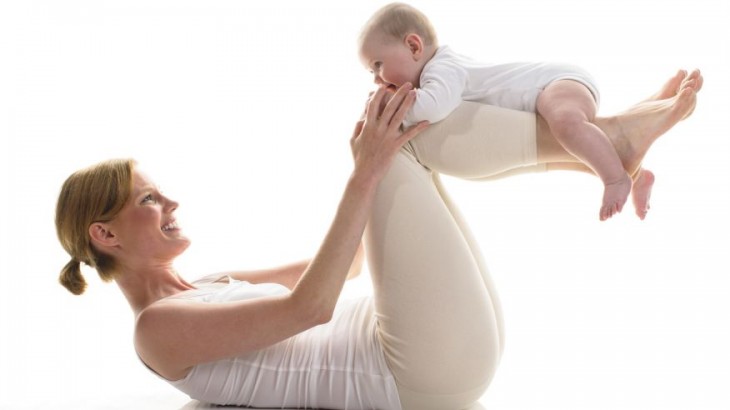
Instead of trying to squeeze in a workout while your newborn is napping— and potentially skipping over any other responsibilities you have piling up— some women are working out with their children.
“If we incorporate our children into our fitness routine we’re killing two birds with one stone,” Andrea Van Zile, mother of 3-year-old Kaia, told FoxNews.com. “We are playing with our kids we’re engaging them in a physical way while exercising.”
Plus, working out with your children will teach them the importance of being active and how to incorporate movement in their normal routines.
Van Zile, who is a Pilates instructor at Vida Fitness and studio manager of SweatBox in Washington, D.C., suggested getting your pre-pregnancy body back with a mother-child workout that allows the little ones to imitate your movements and, if they’re feeling playful and jumping on you, can give you an even tougher workout.
Plank: There are two versions of this, depending on how strong you feel.
The first is to do a modified plank on your hands and knees. Start on your knees and come on to your hands on all fours. Make sure that your shoulders are directly over your wrists and that weight is evenly distributed between all your fingers. Push back into child’s pose and then up to all fours. Shift your weight forward so your chest reaches beyond your wrists and your hips are forward of your knees. Your knees and lower legs remain on the floor. Hold it for 30 seconds, then 60 seconds and then 90 seconds progressing yourself as you build strength and resting in child’s pose in between.
From there you can lead into the full plank, tucking yours under to straighten your legs, like the top of a push-up. Energetically push away from the mat and raise your back to the ceiling. Your tailbone should be tucked under so that your pubic bone is up toward your belly button. Pull your heels and crown of your head away from each other.
Your child can imitate you or hop on your back for some added weight.
Squats: Van Zile likes to do squats in front of a couch or chair so that she knows how low to go. Stand with your feet just wider than your hips with a tiny turnout of your toes. Pitch your body forward and sit back toward the couch, keeping your knees directly over your ankles. Push through your heels and stand all the way up, tightening your core and strengthening your posterior chain. Your child can hop on your back like a piggyback ride for some extra strengthening.
Scissors: Lie down on your back and curl your chest up so you’re on the tips of your shoulder blades. Send your feet to the ceiling keeping your tailbone heavy. Lower your right leg 45 degrees and slowly scissor back and forth between each leg for ten repetitions. If your child hops on, you can take them for a ride on your legs which is fun for them and gives you an added workout.
Van Zile noted that, before you make any lifestyle changes, especially after giving birth, consult with your doctor.
Source: Foxnews


